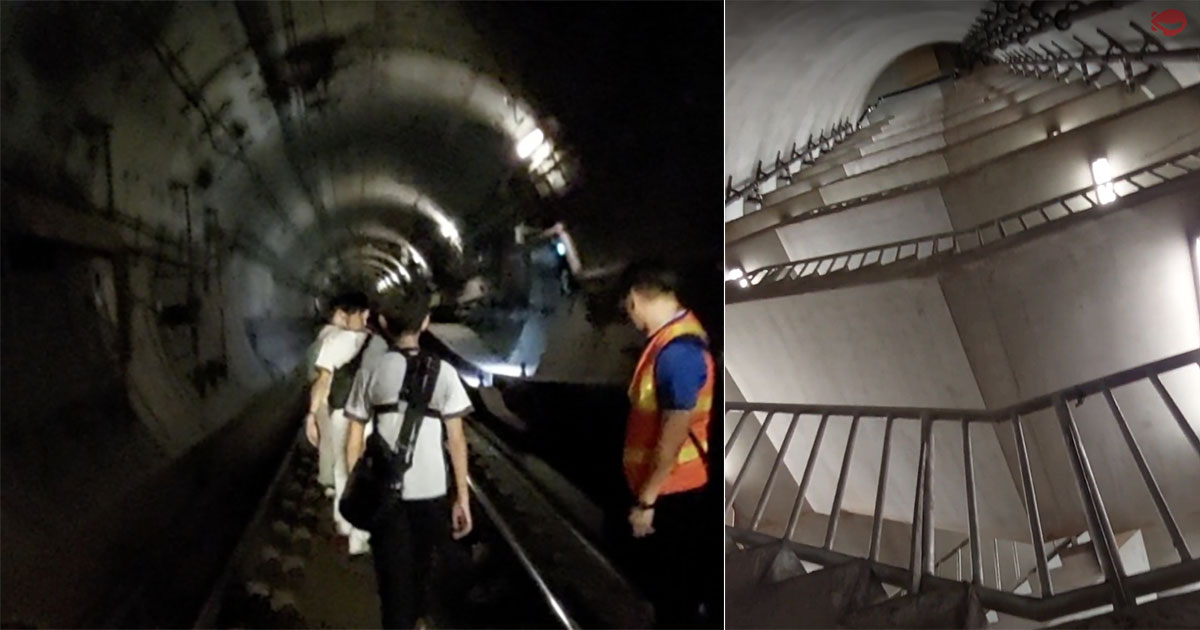Follow us on Telegram for the latest updates: https://t.me/mothershipsg
When a MRT train in Singapore stops in a tunnel and cannot continue its journey, what happens? How are commuters evacuated?
Mothership tagged along for a recent detrainment exercise with SBS Transit and got the opportunity to experience that first-hand.
SBS Transit regularly conducts emergency preparedness exercises, including detrainment exercises -- basically to rehearse evacuation procedures -- so that its staff are well-prepared to deal with public transport disruptions and emergencies on the rail network.
Occasionally, the transport operator opens these exercises to students, and that is why we found ourselves boarding a train at Outram Park Station on the North East Line at 1am on a Saturday alongside 45 students and teachers from Nan Hua High School.
Here's the scenario that played out: A track fault caused a train to stall inside a tunnel on the North East Line between Outram Park and HarbourFront stations.
Passengers have to be evacuated onto the track.
Typically, passengers will walk to the next station but in this scenario, HarbourFront station is overcrowded and so, the passengers have to exit the tunnel through an escape shaft.
As the train halted in the tunnel, an announcement was made over the intercom, informing passengers that recovery works were in progress.
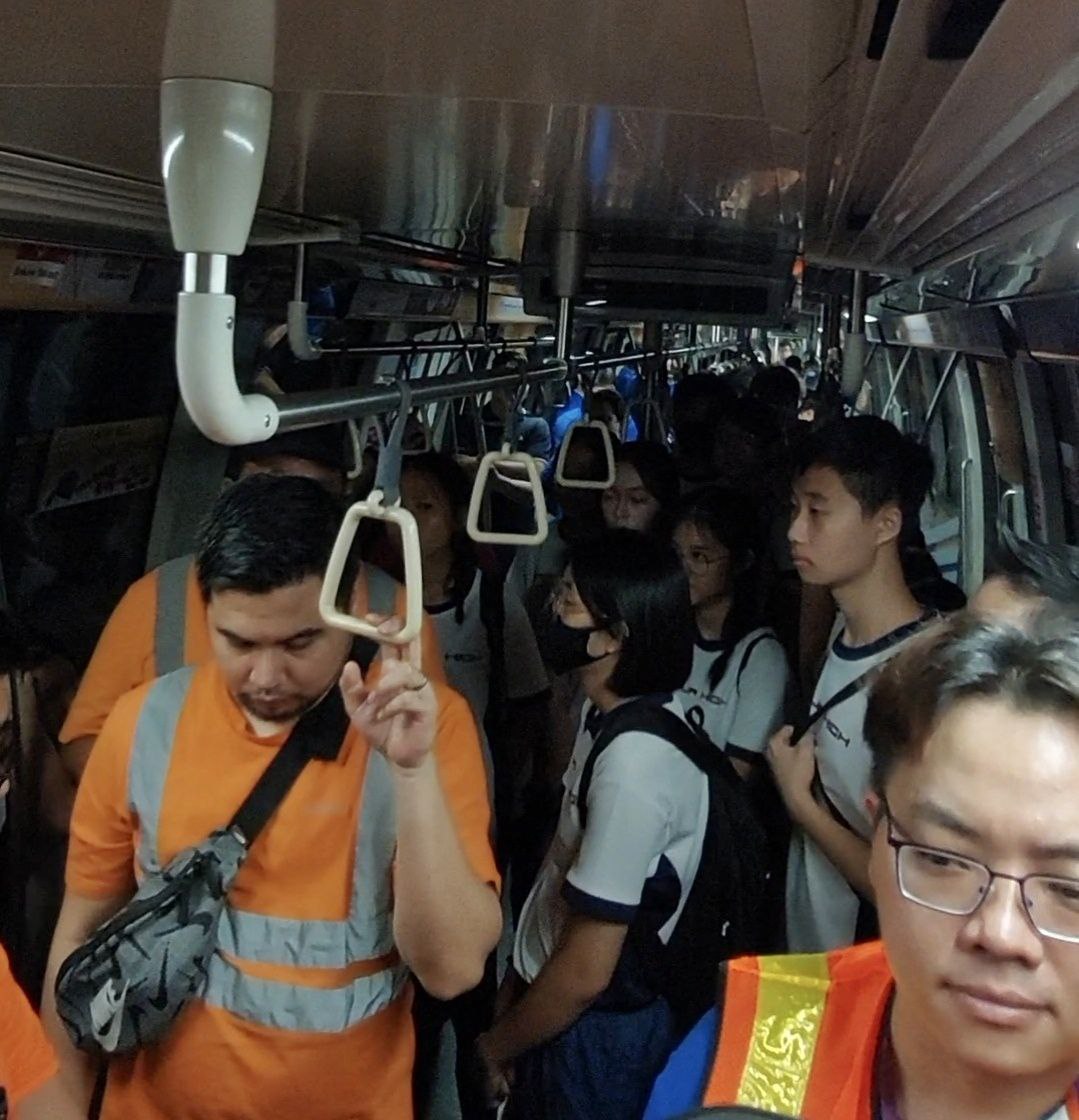 Waiting in the train. When preparing for a detrainment, power is cut from the train and track, which is why it would be quite dim inside the train.
Waiting in the train. When preparing for a detrainment, power is cut from the train and track, which is why it would be quite dim inside the train.
When it became clear that the passengers had to be evacuated from the train, another announcement was made over the intercom, briefing the passengers on what they had to look out for while exiting the train and making their way through the tunnel.
At the same time, rail staff were sent onto the tracks to marshall passengers as they evacuate.
Then, the emergency door at the front of the train was opened:
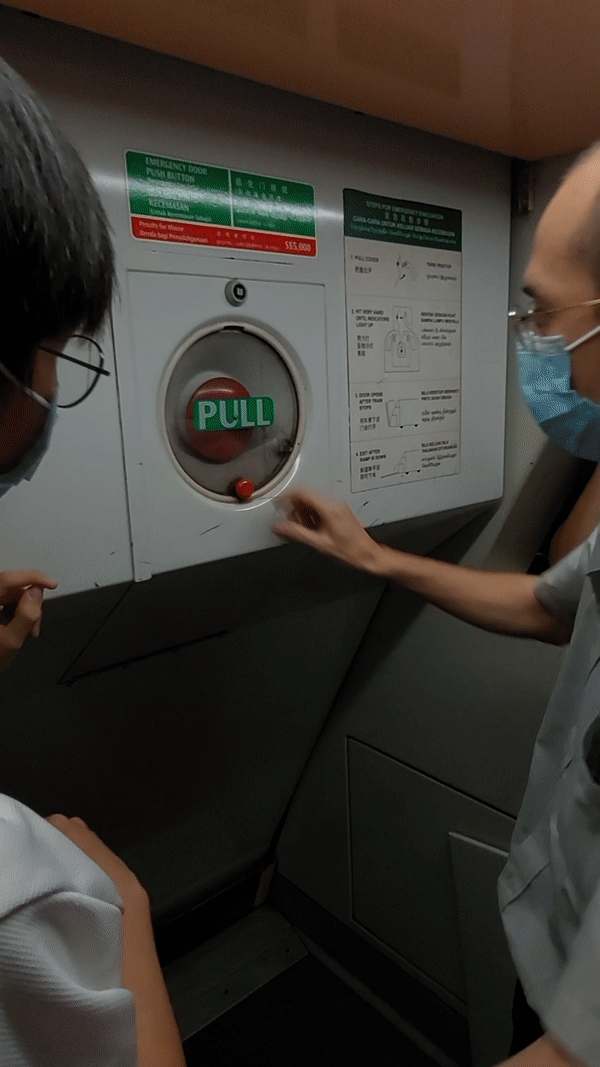
When the emergency door is activated, it unfolds into a ramp onto the track -- you can't hear it from the gifs but it's very loud:
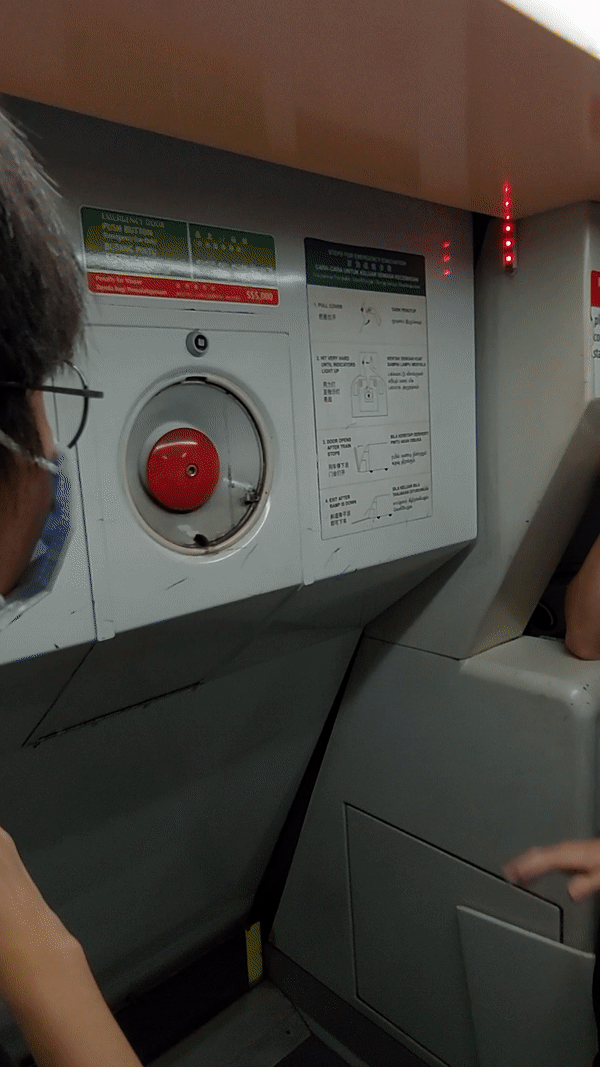
And off we went:
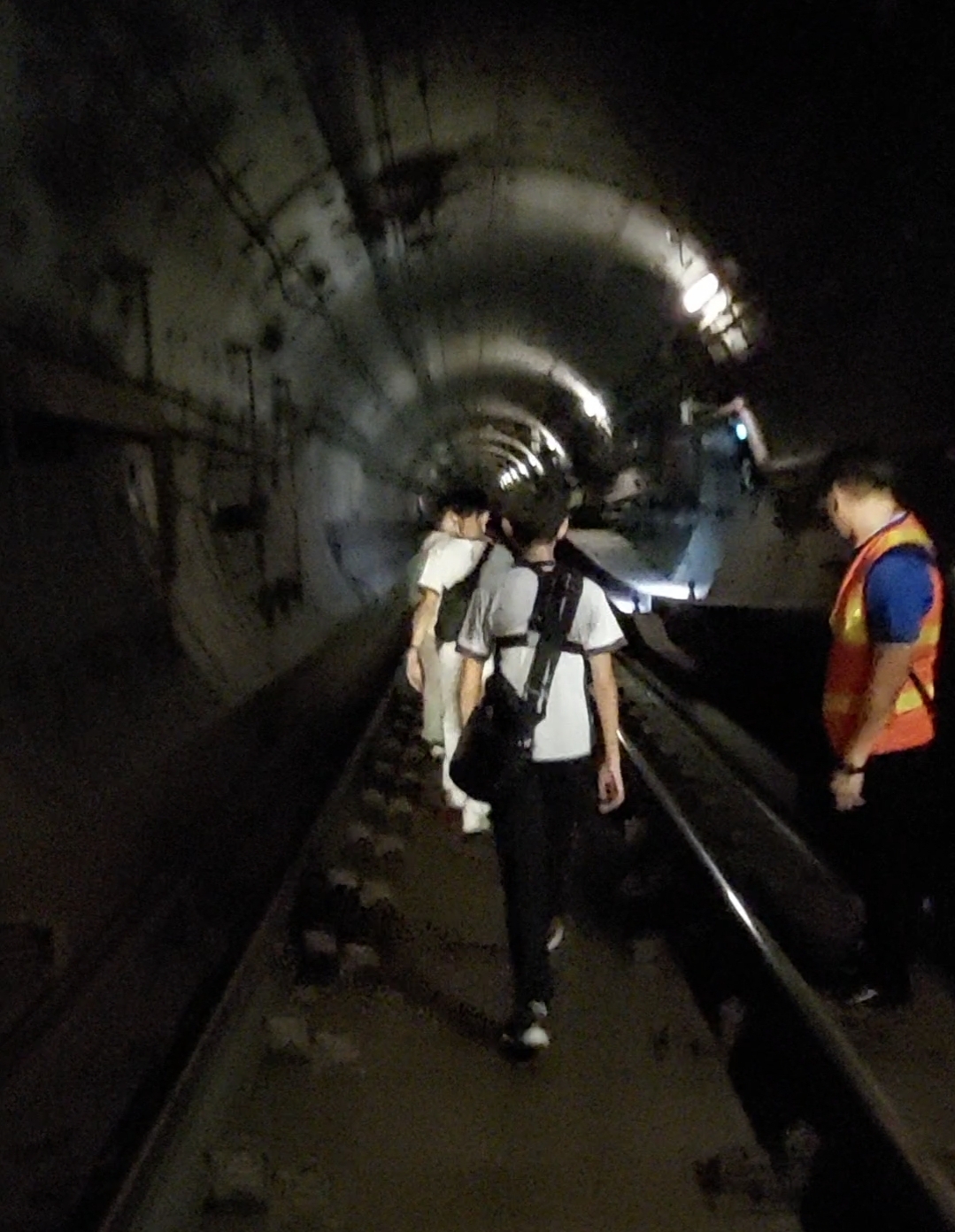
During a detrainment, the power is cut off from the tracks, but there will be emergency directional lights in the tunnel.
It was a short walk to the escape shaft, and while the ventilation in the tunnel was quite poor, the entire walk was very orderly thanks to the presence of SBS Transit staff who were onsite to direct the evacuees.
And then, it was just a 12-storey climb to reach the outside of the escape shaft.
As you can imagine, it was hot and stuffy in the ground.
With all the participants in the exercise able-bodied, the task was for everyone to complete the climb without any major issues.
In the event that there are evacuees with mobility issues, SBS Transit said staff would call the Singapore Civil Defence Force for assistance.
Once we were out of the escape shaft, there were bridging buses to take us to the nearest transport node.
In total, the entire experience, from the time the emergency door was triggered to the moment we stepped out of the escape shaft, took around 40 minutes.
Check out the entire experience here:
Not the first time the exercise was open to public
Jeffrey Sim, Group CEO of SBS Transit and CEO of SBS Transit's Rail Business, told Mothership that the purpose of the exercise is two-fold.
"One is that, despite our best efforts, faults can and will happen, and we would like to involve the members of the public so that they can understand that in such cases, how we evacuate them as part of incident management plans, so that they can be safe and secure.
And hopefully with this knowledge that they acquire, they are able to help other members of the public should such a situation arise when they're in the train."
The second purpose of the exercise, said Sim, is to evaluate SBS Transit's operating procedures and ensure that its rail passengers can be successfully and safely evacuated during an emergency.
While SBS Transit had conducted numerous emergency preparedness exercises in the past, this was only the second time it opened an exercise to the public.
"The first one was with Hwa Chong Institution. They give us very invaluable feedback and through their feedback, we improved our operating procedures this time round."
Nan Hua High School principal Chiew Jing Wen told Mothership that the experience was very helpful for his students.
"In a real-life scenario, maybe some of our students may be among other commuters who may need help. Being able to familiarise themselves with such a situation -- how to respond, and what to expect -- allows them to guide others."
All images by Joshua Lee.
If you like what you read, follow us on Facebook, Instagram, Twitter and Telegram to get the latest updates.

